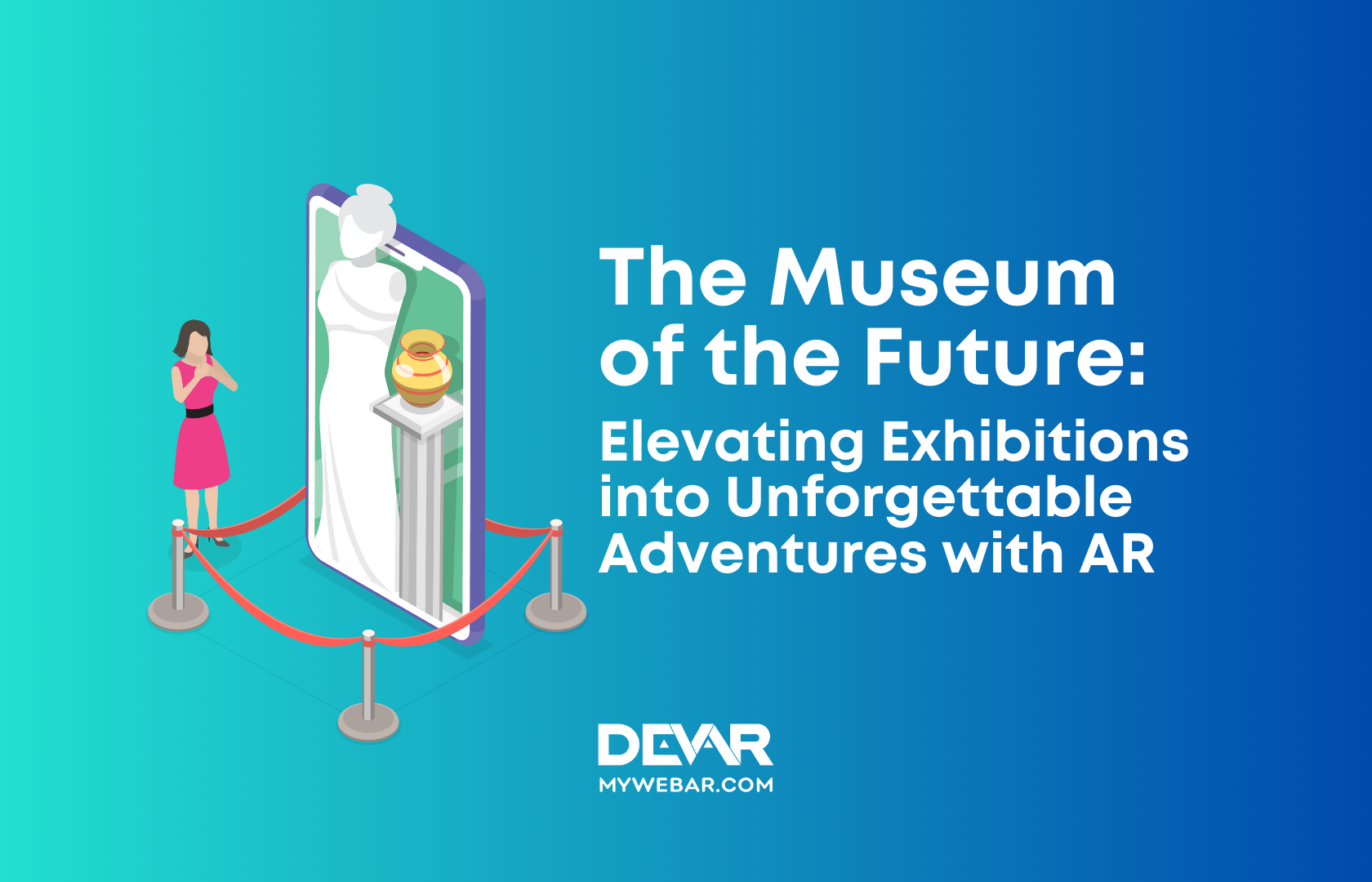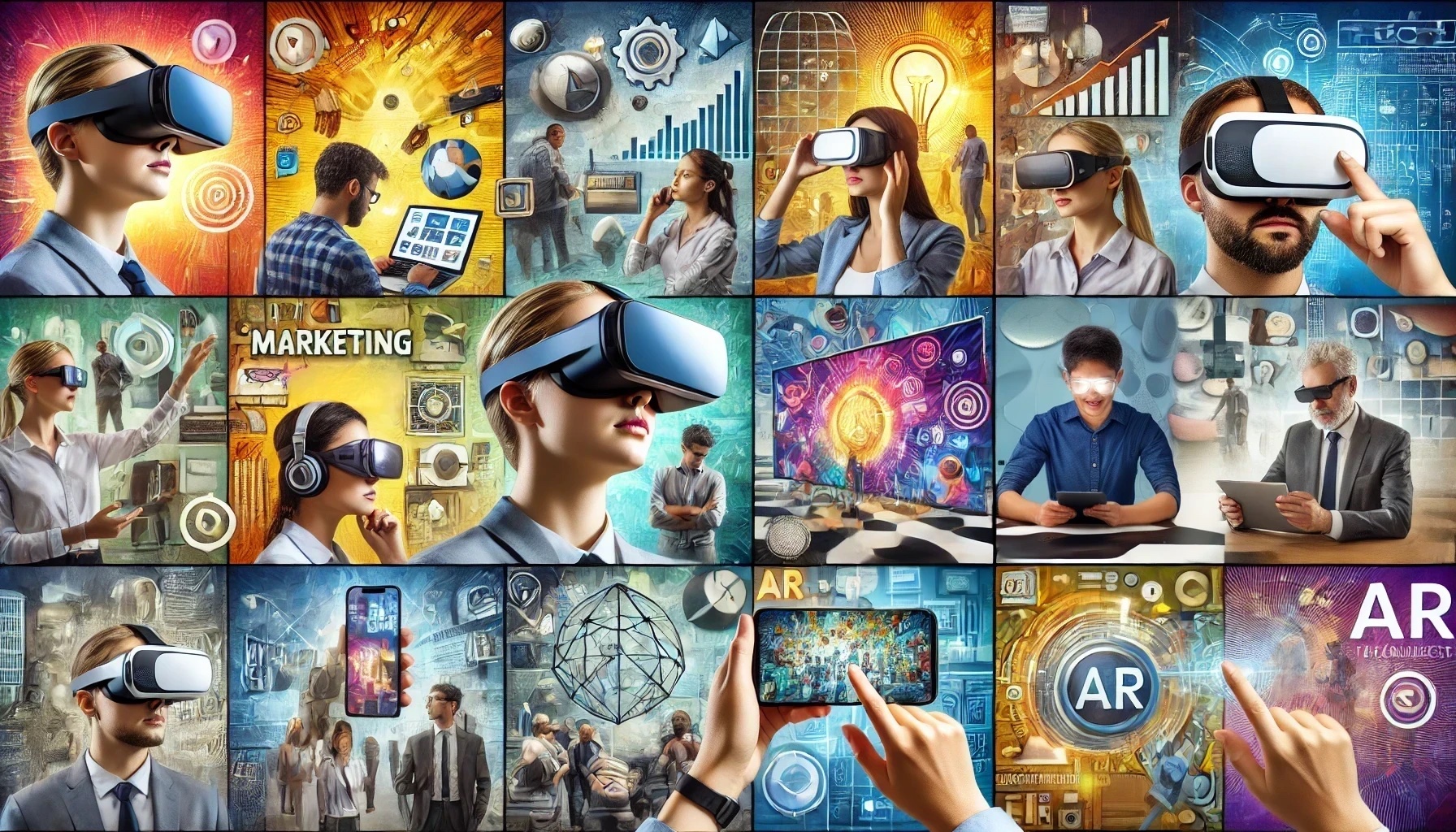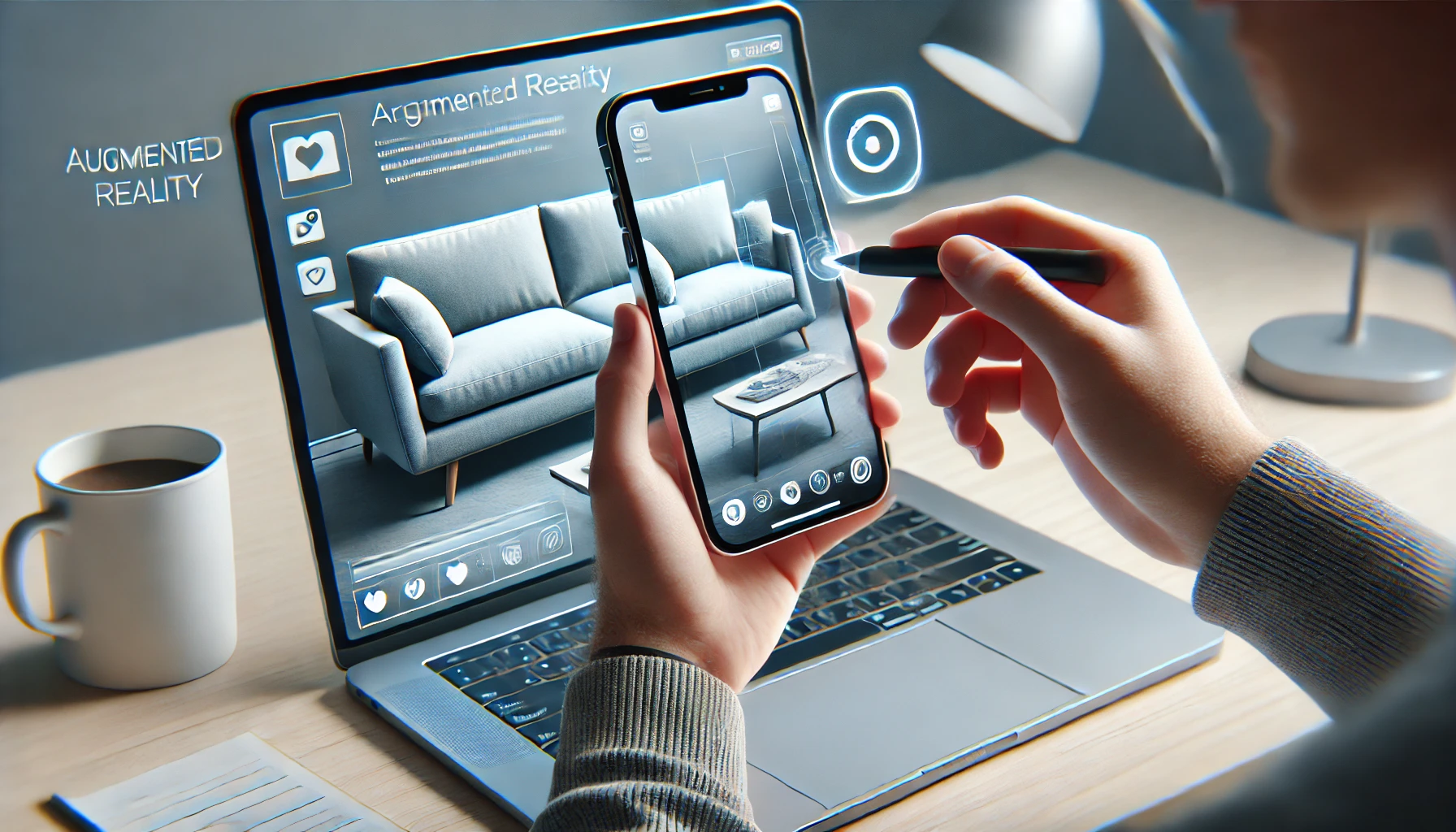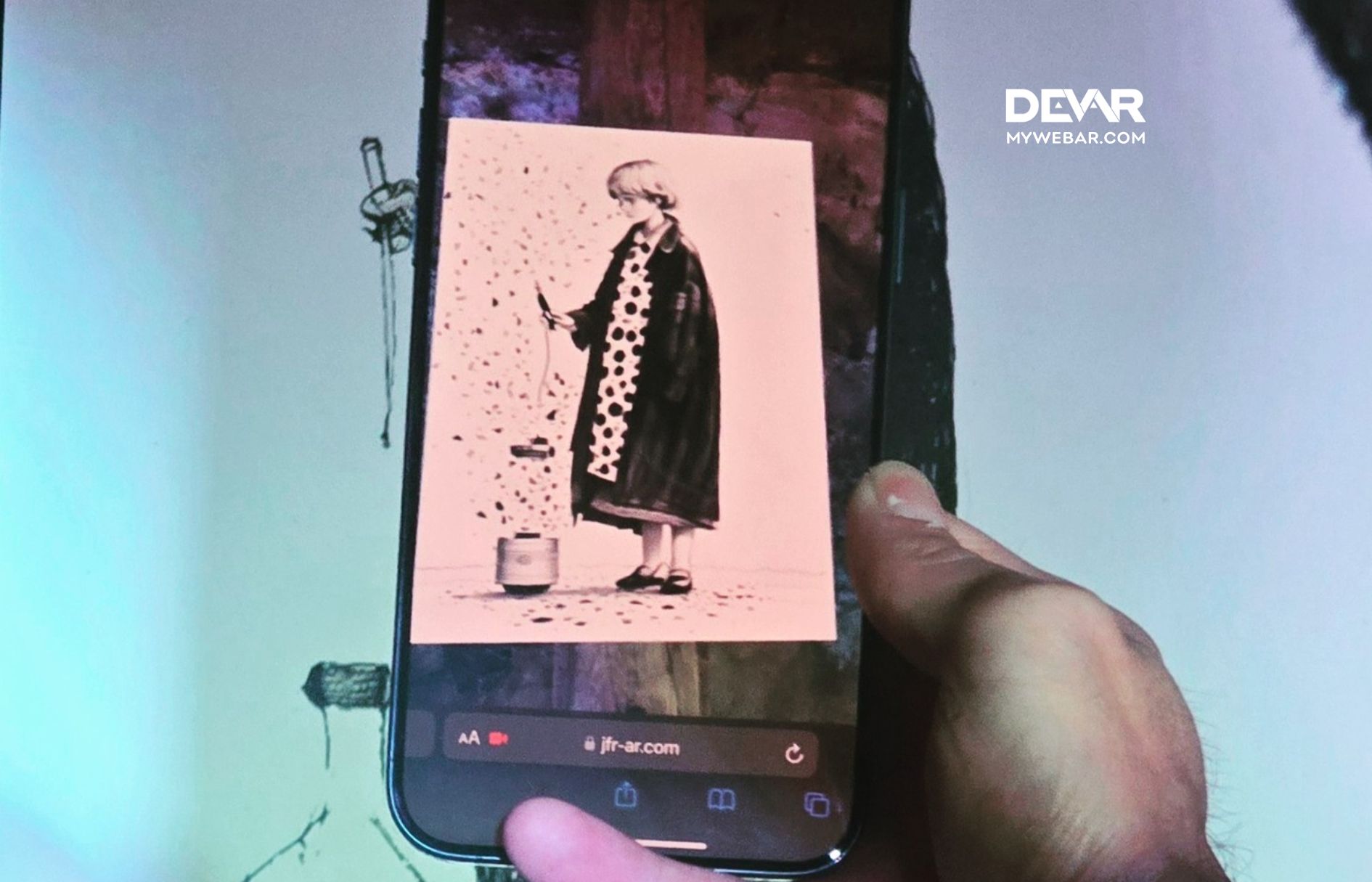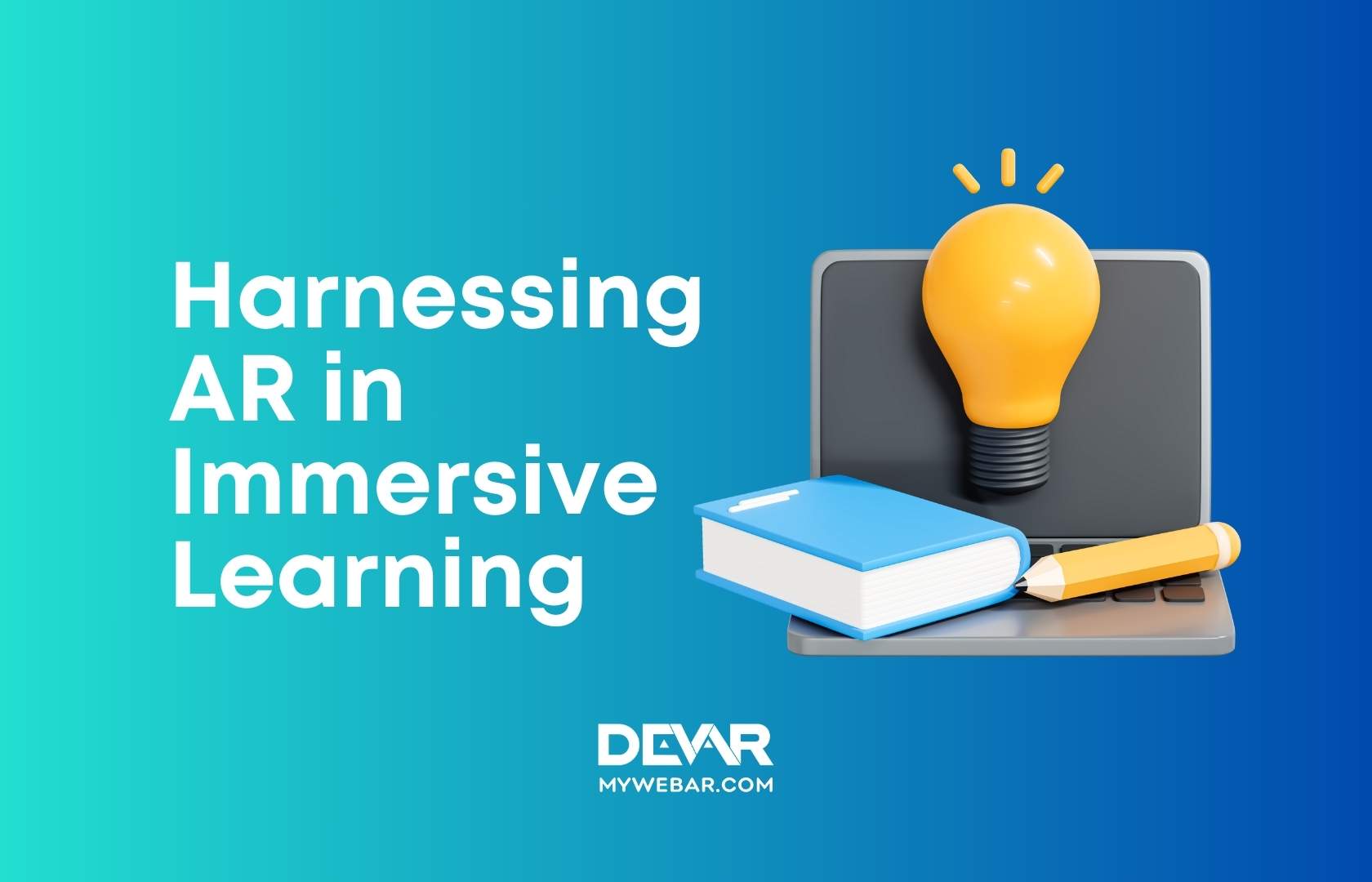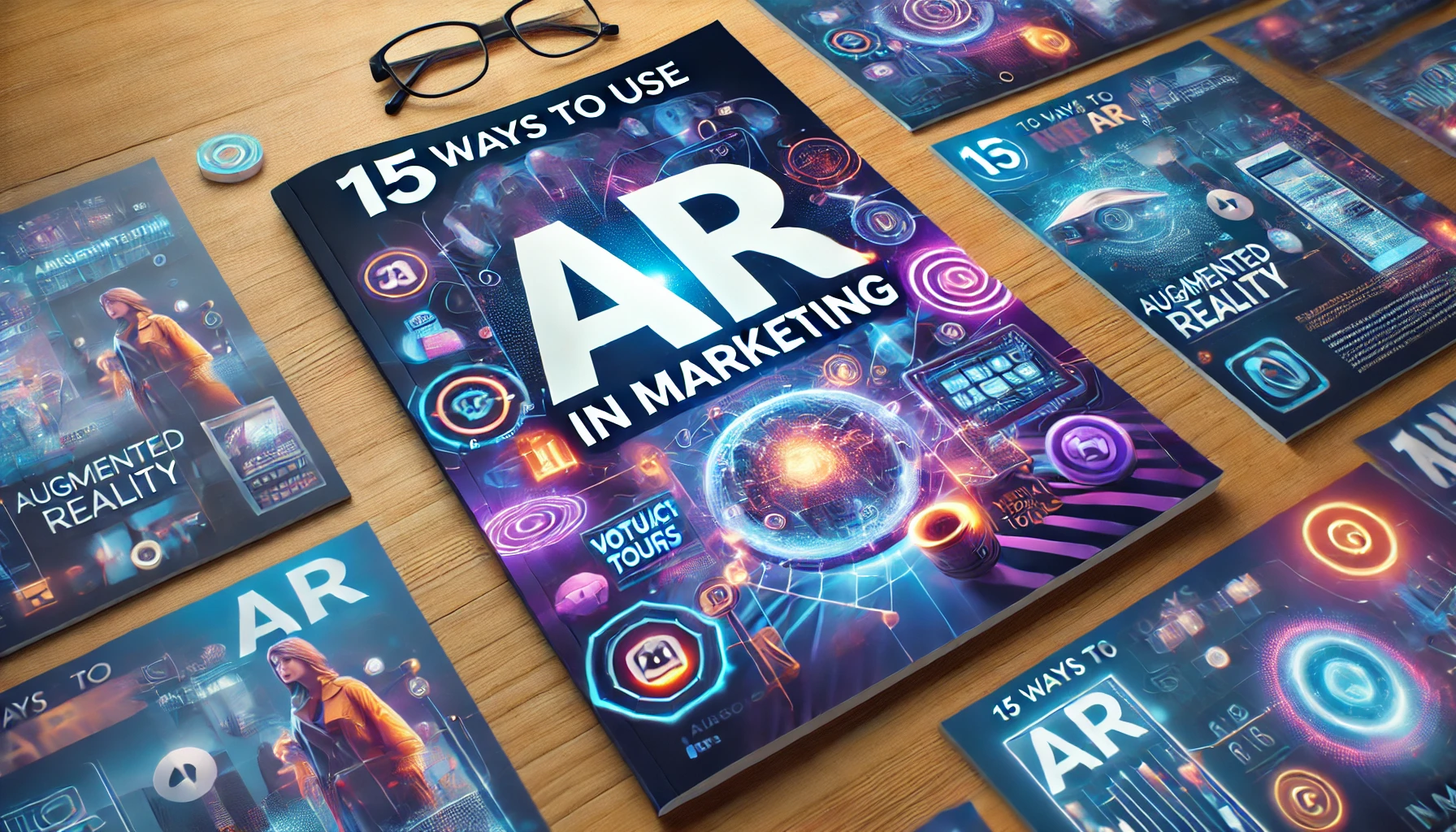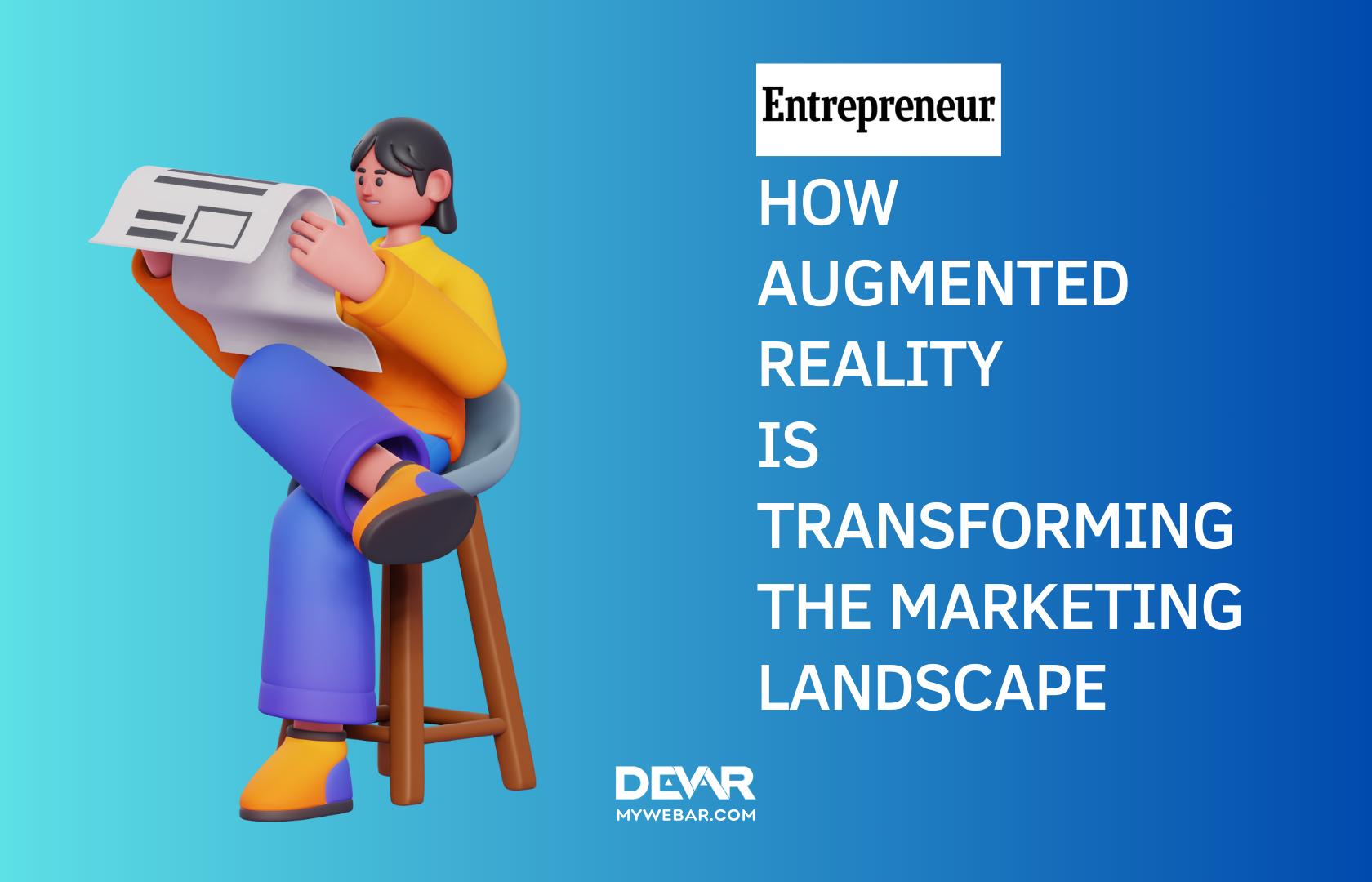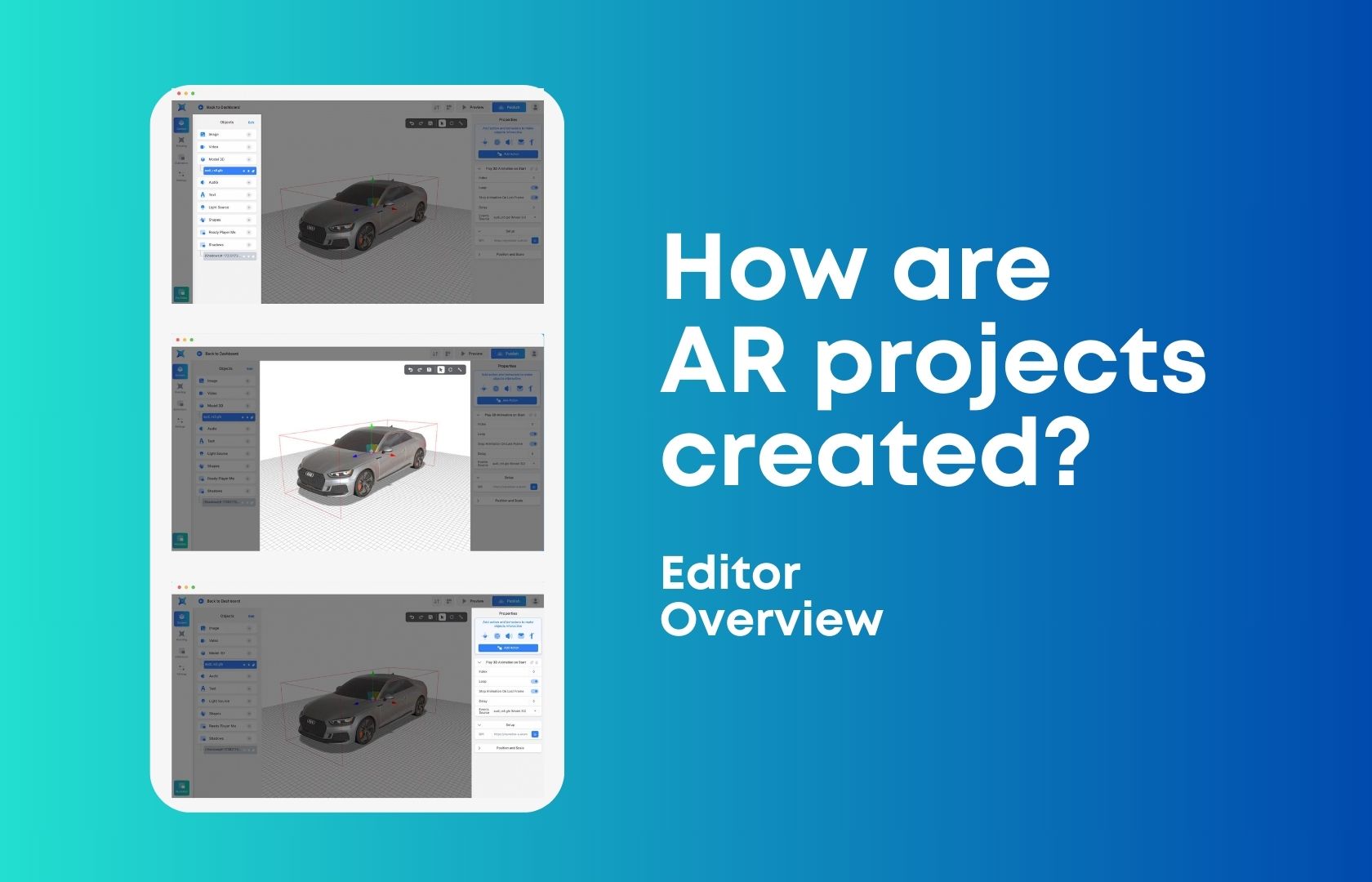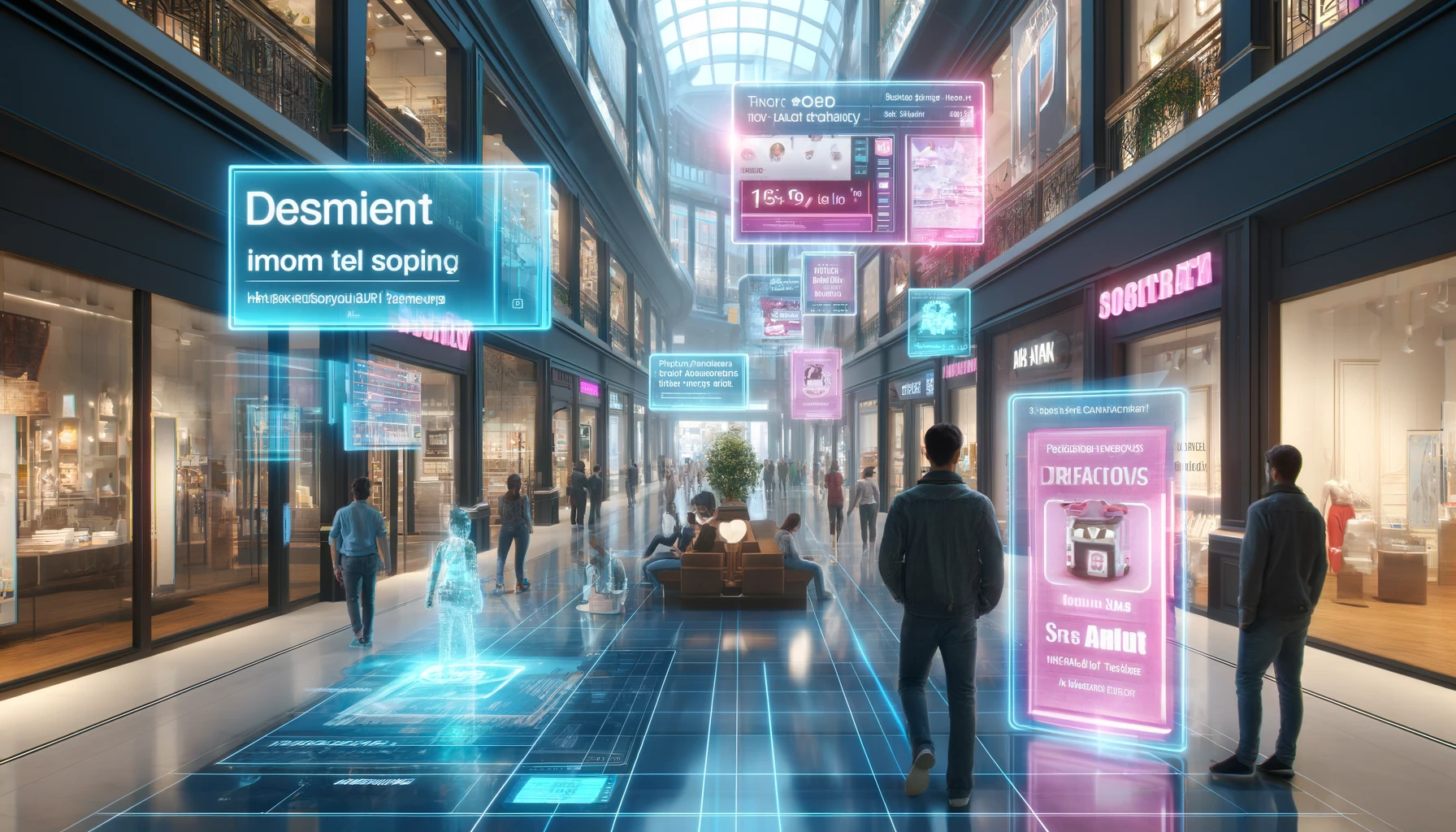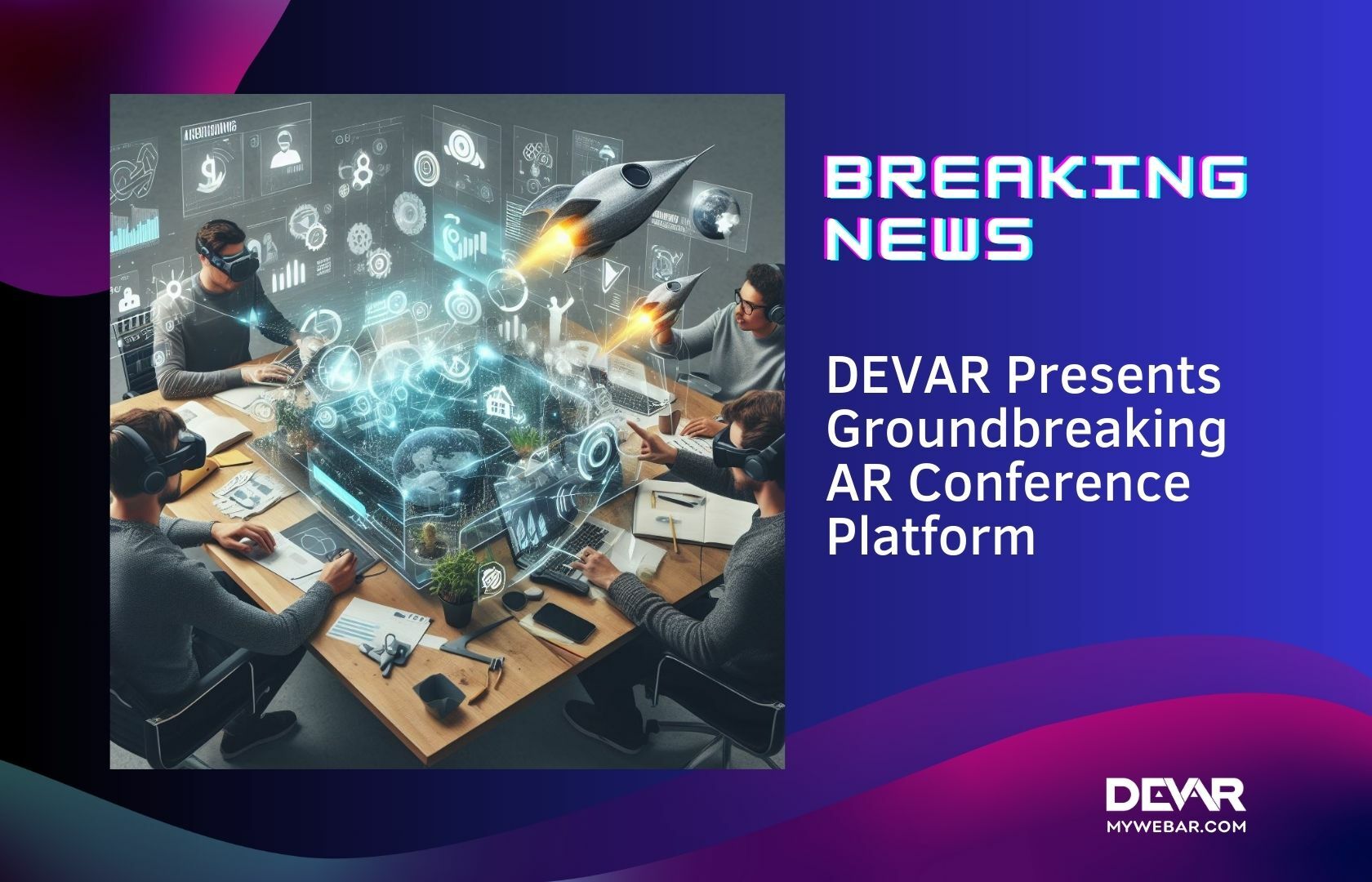Before you is the personal story of Sean Cooper, the creative director of a well-known marketing agency, the name of which, for understandable reasons, we cannot disclose.
In this article, he shares his thoughts, ideas, and research on the use of augmented reality (AR) in museums. Here you will find numerous real examples and inspiring facts about how museums are already using AR and what prospects await them in the future.
What it all started with…
When I was a little boy, I found visiting museums to be a rather boring activity.
But, of course, there was an exception to this rule. Dinosaurs! Huge skeletons displayed in equally huge museum halls excited my mind and imagination. I would sit next to them for a long time, dreaming of seeing them in real life. To observe how they move, eat, and interact with each other.
I imagined that someday there would definitely be amazing museums of the future where I could see all of this firsthand.
But, please, not like in “Jurassic Park,” thank you very much!
In my dreams, I was not alone. Honestly, there wasn’t much interactivity in museums at that time. You could read labels, talk to the guide, or play archaeologist in a sandbox filled with toy bones.
Boring.
This, of course, is nothing compared to what, for example, The Smithsonian Institution in Washington D.C. offers these days!
Of course, they are not dinosaurs (which is very unfortunate!), but these cuties look just as cool. If you have been to this museum, you probably recognize this place. It’s the Bone Hall, one of its oldest and most loved displays in the museum. Many skeletons have been exhibited here since as far back as 1881!
And how cool is it that the people who work here didn’t treat this ancient exhibition conservatively and traditionally, but instead tried to find new interesting solutions for it. Solutions that not only engage visitors but also allow them to delve even deeper into the subject they are exploring.
To bring the skeletons to life, users will have to download a special app, through which 13 skeletons come alive using augmented reality technology, growing bones and muscles and starting to move.
Visitors will not only see a skeleton, like that of a vampire bat, but also witness how it takes flight.
“This app is all about sharing some of the untold stories behind one of the museum’s most iconic collections,” said Robert Costello, the producer of the app and national outreach program manager at the Museum of Natural History.
This is interesting. This is truly amazing! Although it’s a bit of a shame that it’s not web AR. In my opinion, research would be much faster and easier if it didn’t require downloading a separate app.
Actually, the topic of using AR in museums caught my interest precisely after watching this video. And I thought, “Sean, this is a great topic for an article!” Because museums are simply a treasure trove of endless ideas, interactivity, learning, and inspiration.
There is so much that can be imagined here! Unusual, cool, exciting, and inspiring… But let’s start, as usual, with research.
AR Resurrection: AR in Muséum national d’Histoire naturelle
This beautiful museum is located in Paris. In many sources, it is referred to as a pioneer in the use of augmented reality. I’m not sure if that’s true or not, but their project is truly amazing.
So, what have they done? Using modern technologies, they offered their visitors a unique opportunity to come face to face with digital copies of animals that are no longer possible to encounter in our world.
This project has a very stylish and mesmerizing name, “REVIVRE,” which translates to “To Live Again.”
I don’t know about you, but all of this gives me goosebumps.
Augmented Reality Art Gallery 2021
Do you think you can only bring animals to life? Well, think again! The bold British project, Art of London, literally spilled art onto the streets of London’s West End using augmented reality.
Moreover, many leading galleries in London have come together to display a curation of their most beloved classic art pieces outdoors. This exhibition is in a free and accessible environment for all. They are using augmented reality to present the public with the art gallery of the future.
A huge free digital exhibition stretched from Trafalgar Square to Green Park, offering to explore a fascinating curation of masterpieces. Works from the likes of the National Gallery, National Portrait Gallery, Royal Academy of Arts, and Sky Arts Portrait Artist of the Year were displayed for all to see. This allowed residents and visitors of the city to touch art beyond the walls of museums and galleries.
In my opinion, both the idea and its execution in this project were top-notch!
AR Interactive: AR in the National Museum of Singapore
The National Museum of Singapore has created a beautiful immersive installation that is truly a living fairy tale!
The exhibition, titled “Story of the Forest,” focused on 69 images from the William Farquhar Collection of Natural History Drawings. These images were transformed into three-dimensional animations that visitors could interact with.
Of course, visitors had to download a separate app here as well, but for the magic happening around, I won’t even grumble about it this time.
Users were invited to stroll through the exhibition and discover various animals and plants depicted in the paintings, “catch” them, and add them to a special collection.
Yes, it does seem familiar to you. It really does resemble Pokémon Go. But it’s such a clear and fun interactive experience for the whole family, so why not?
AR and Double Exposure: AR in Seattle Art Museum
The title of this exhibition held at the Seattle Art Museum speaks for itself: “Double Exposure.” In my opinion, it sounds really great because behind one painting, there is a hidden second one. And it comes to life thanks to augmented reality technology.
Pocket AR Museum: AR in the Cleveland Museum of Art
Here is another example of an excellent interactive experience for the whole family! The Cleveland Museum of Art came up with using augmented reality technology in conjunction with Xbox Kinect, and here is what they have achieved from it:
With the application, your smartphone will turn into a museum companion. It will also give you the opportunity to explore and create without leaving home. This means you can both come to the museum and leave with it at home, and then take it with you wherever you want.
Isn’t that great?
AR Engagement: AR in the Art Gallery of Ontario
The Art Gallery of Ontario, in collaboration with digital artist Alex Mayhew, pondered on the fact that in the age of gadgets and modern technologies, people are in such a rush to consume information that even art – especially static art such as paintings – is consumed too quickly.
We pass by without taking the time to delve into the narrative, appreciate its meaning, or savor the aftertaste of realization.
So, with the help of AR, Mayhew reimagined some of the existing pieces in the collection and created a project called ReBlink, hoping to engage exhibition visitors through modern technologies. And it… worked.
According to the AGO’s Interpretive Planner Shiralee Hudson Hill, 84% of visitors to this exhibition reported feeling engaged with the art. 39% looked again at the images after using the app.
In my opinion, this is excellent evidence that our world is changing. We think and act differently, but it’s neither bad nor good. It’s simply a new stage in our development and perception of reality.
I have already reflected on this in my previous article about the future we are not prepared for. We should not fear change, but rather act proactively. And this project is a great confirmation of that.
AR Time Travel: AR in the Kennedy Space Centre
So, we have seen how augmented reality brings animal skeletons to life and resurrects species that we may never see again. We have seen how AR can create an art exhibition on the city streets and provide entertainment for the whole family in a museum. We have seen how AR captivates visitors’ attention.
What else can AR do? Ha-ha, how about time travel?
The Heroes and Legends exhibit at the Kennedy Space Centre is a great example of how AR can help museum visitors better understand historical events by making them participants in history. Here, through AR technologies, visitors can witness a key moment in the history of the American space program.
Visitors will not only observe the daring flight of astronaut Gene Cernan, who made the second spacewalk in history, which he himself called “a spacewalk from hell.” (I remind you that during the flight, his spacesuit overheated, causing him to go into an uncontrolled spin without the ability to see). But also to hear his voice, his comments, and his experiences.
Additionally, at this exhibition, you can encounter numerous AR holograms. So, visitors will be able to hear the stories of famous NASA employees, told in their own words.
And this is a very powerful and engaging project!
AR Reconstruction: AR in Roman City of Carnuntum
The team at the Roman City of Carnuntum decided that with the help of AR, they could not only travel to the past but also literally reconstruct historical monuments.
Based on the scientific results of the Ludwig Boltzmann Institute for Archaeological Prospection and Virtual Archaeology, they built a digital model of the gladiator school in Carnuntum.
A completely new approach to visiting historical monuments, isn’t it?
AR Guide: AR in Museum of Celtic Heritage
The Museum of Celtic Heritage came up with an AR guide back in 2018, which accompanies visitors and tells them interesting facts. The project was aptly named: “The Speaking Celt.”
The graphics may seem a bit naive, but it’s a great idea for tours. Especially for children’s tours.
My Conclusions about AR in Museums
In the digital age, museums are constantly exploring innovative ways to engage and educate visitors. One powerful tool that has revolutionized the museum experience is Augmented Reality. AR seamlessly blends the physical world with digital content, offering a new dimension to storytelling and interaction within museum spaces.
I believe this technology has the potential to transform the way we engage with and experience museums. By leveraging AR technology, museums can create dynamic, interactive, and inclusive spaces that cater to the diverse needs of modern audiences. As AR continues to evolve, its integration into museums will undoubtedly shape the future of cultural institutions worldwide.
But who am I kidding? The use of AR is shaping the future of museums right now.
Just look at the myriad possibilities that AR technology offers: engaging visitors, surprising them, delving deeper into exploration, inspiring, transporting them to the past, entertaining, making museums more accessible, and so much more!
Moreover, it is truly in demand. In a 2018 survey of over 21,000 consumers conducted by Accenture, the AR use case with the highest demand was “learning more about a place they are visiting.”
People love to explore, to know more, to dive deeper. And AR can help them do so in an engaging and impressive way.
What Does the Statistics Say?
According to a study published in 2022, “AR technology can trigger users’ engagement, learning, meaningful experience, and emotional connection, and hence arouse their interest and learning process.”

This study also showed that AR can make the environment more informal and the information perception process more engaging.
The combination of AR technology with storytelling, 3D models, and animation not only enhances motivation and interest in learning but also encourages people to a higher level of the learning process.
Thus, AR technology allows visitors to actively participate in the museum experience and create rich interactions with exhibits. This significantly stimulates the emotional connection between visitors and exhibits during the museum exploration process.
Another equally interesting study on this topic states the following: “The museum is an open space for the preservation of knowledge and culture. Although defined as a space of perpetual learning, it still contributes to the popularization of knowledge. Furthermore, the museum gradually integrates augmented reality in the exhibitions to enhance visitors’ educational experience, which has transformed traditional education.
A pleasant learning surrounding can make learning more effective, and augmented reality is a catalyst for a pleasant learning surrounding. to experience the museum autonomously”.
I think comments are unnecessary here.
Apple Vision Pro and AR in Museums
And again about Apple Vision Pro. I can’t bypass this topic. Especially in the context of discussing museums. Since the headset’s release, the entire art community has been discussing its incredible potential for use.
The point is that the headset’s impressive computational capabilities and ultra-high-definition graphics, praised by critical technology experts, allow artists and developers to display their work with unmatched clarity. This encompasses images, 3D models, videos, and virtual environments at an exceptionally high resolution, appearing free of pixels.
This will not only take art to a whole new level but also open up previously unimaginable possibilities for exhibitions and museums. It will further blur the boundaries between exhibits and digital content.
Why is Web AR better than an app?
One key benefit of Web AR is its ease of access. Users can engage with AR experiences directly through a web browser without the need for downloading and installing a separate app. This eliminates the barrier of entry for users who may be hesitant to download new apps, making AR content more readily available to a wider audience.
Additionally, Web AR provides a seamless and frictionless experience for users. They can instantly access AR content without taking up storage space on their devices. With Web AR, users can simply scan a QR code or click on a link to launch the AR experience quickly and efficiently. This convenience and immediacy make Web AR a more user-friendly option compared to traditional app-based AR solutions.
…and what it all came to.
I constantly talk about how the world is changing, and I suppose you might be getting a little tired of it. So this time, I will say the following: no matter how much the world changes, what remains unchanged are sincere emotions and insatiable human curiosity.
We yearn to explore, experiment, immerse ourselves, compare, discover, be charmed, be amazed, relate, understand, learn. All of this can be provided by information. But there is a vast chasm, as deep as the Mariana Trench, between dry and dull information and information that turns our perception of reality upside down.
No matter what goal a museum sets for itself, whether it’s education, preservation of history, memory, sparking interest, advertising, or seeking commercial support, all of these objectives will be enhanced by the use of augmented reality in the exhibition. The incorporation of augmented reality can amplify the educational experience for visitors, enhance the preservation and presentation of historical artifacts, spark increased interest and engagement from the public, boost promotional efforts, and potentially attract commercial support for the museum’s initiatives.
Maps, guides, animated paintings, interactive scenes – all of this is real and available right now. Just like my childhood dream of a living dinosaur.
Sincerely yours, Sean Cooper
